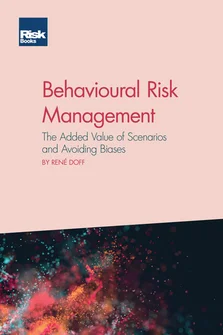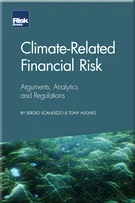Using Scenarios
Using Scenarios
Preface
An Introduction to Behavioural Risk Management
Risk Management Context
Value-at-Risk as the Dominant Risk Management Tool in the Financial Industry
Case Studies on Risk Management Failure
The Role of Regulation in Risk Management
Advances in Behavioural Economics and Finance
Behavioural Issues with Probability
Systems Theory
Using Scenarios
Making Robust Decisions
Advances in the Risk Management Process
Behavioural Risk Management in the Financial Markets
Countervailing Power
Behavioural Risk Management: Closing Thoughts
Appendix: Selective list of Behavioural Biases
Bibliography
Chapter 2 described the principle of the VUCA world. If the world is indeed volatile, uncertain, complex and ambiguous, traditional prediction models are not likely to work very well, which we demonstrated in Chapter 3 in our assessment of the VaR methodology. Stock prices and interest rates are inherently difficult to predict, and it is not only the financial markets that suffer from this unpredictability – weather, housing prices, the strategic moves of the competition, all these aspects are difficult to predict.
In prediction, there is a balance between correctness/accuracy and precision. We can say with almost 100% accuracy that tomorrow’s temperature will be between –10°C and +40°C. However, that is not very precise and is therefore useless information. Similarly, a statement that the S&P 500 will lie between 500 and 5,000 points one year from now is very likely, but hardly guides our potential actions or investment decisions. Likewise, a prediction that the S&P 500 will be exactly 2,358 next year is very precise but most probably incorrect.
Nevertheless, we consistently try to beat the odds by making very detailed predictions. Even worse, evidence shows that we are
Copyright Infopro Digital Limited. All rights reserved.
As outlined in our terms and conditions, https://www.infopro-digital.com/terms-and-conditions/subscriptions/ (point 2.4), printing is limited to a single copy.
If you would like to purchase additional rights please email info@risk.net
Copyright Infopro Digital Limited. All rights reserved.
You may share this content using our article tools. As outlined in our terms and conditions, https://www.infopro-digital.com/terms-and-conditions/subscriptions/ (clause 2.4), an Authorised User may only make one copy of the materials for their own personal use. You must also comply with the restrictions in clause 2.5.
If you would like to purchase additional rights please email info@risk.net










